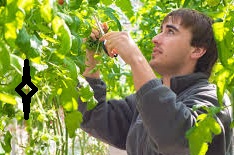Horticulture
Horticulture:
Agribusiness has a long history. The assessment and investigation of agribusiness dates directly back to the long periods of Cyrus the Great of outdated Persia, and has been going on starting there ahead, with present-day horticulturists, for instance, Freeman S. Hewlett and Luther Burbank. The demonstration of development can be backtracked for an immense number of years. The improvement of taro and yam in Papua New Guinea returns to in any occasion 6950–6440 cal BP. The foundations of horticulture lie in the advancement of human systems from going tracker locates to fixed or semi-latent green systems, building up an arrangement of yields bringing things down a peg around their homes or specifically plots visited occasionally during developments beginning with a one area then onto the following, (for instance, the "mil father" or maize field of Americanism cultures)In the Pr-Columbia Amazon Rain forest area, local people are acknowledged to have used bio scorch to overhaul soil benefit by fuming plant waste. European pioneers called it Terra Peta de Indio.In boondocks zones such development is normally done in enlarges ("cut and devour" locales). A nature of plant systems is that useful trees are routinely to be found planted around systems or remarkably held from the ordinary organic framework.
Development essentially changes from agribusiness in two unique manners. At first, it generally incorporates a smaller size of advancement, using little plots of mixed yields rather than gigantic fields of single harvests. Likewise, green improvement generally fuse a wide arrangement of yields, regardless, joining characteristic item trees with ground crops. Agrarian improvement in any case as a rule focus on one fundamental yield. In per-contact North America the semi-latent green systems of the Eastern Woodlands (creating maize, squash and sunflower) stood apart especially from the versatile agrarian systems of the Plains people. In Central America, Maya farming included increment of the forest with accommodating trees, for instance, papaya, avocado, cacao, abstinent and sarsaparilla. In the cornfields, different yields were become, for instance, beans (using cornstalks as supports), squash, pumpkins and chill peppers, in specific social orders tended prevalent or just by women.











Post a Comment